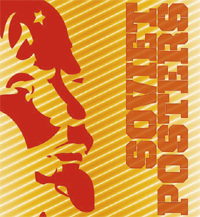 In the 1880s, Russian advertisers picked up an advertising technique that was being used with great success in France and Germany — the poster. Cookie and cigar companies began commissioning posters and respected artists started to develop the medium. By the end of the century, it was one of the most effective advertising mediums available.
In the 1880s, Russian advertisers picked up an advertising technique that was being used with great success in France and Germany — the poster. Cookie and cigar companies began commissioning posters and respected artists started to develop the medium. By the end of the century, it was one of the most effective advertising mediums available.
(Only newspapers rivaled them, as electricity had yet to make television and radio appear.)
With the Revolution of October 1917, Lenin and the Bolsheviks turned to posters to spread their ideas to the masses, launching the distinctive and now widely collected era of Soviet Posters. Up until the time of Gorbachev in the 1980s, these posters mixed traditional and modern imagery to portray an idealistic and patriotic society.
The posters were designed to persuade the masses, and the greatest painters and poets of the time were used to create the propaganda. Typically printed in editions from 5,000 – 100,000, the posters were displayed in public areas and updated as ideology and goals changed.
In Soviet Posters, author Maria Lafont presents 250 rare and previously unseen posters from the collection of Sergo Grigorian. The collection documents the changes in style, from the introduction of photomontage by Gustav Klutsis to the changes in ideology. “Let’s avenge the people’s suffering” (1943) turns to “A peaceful world — that is our happiness” (1961).
– Chris Force
Soviet Posters: The Sergo Grigorian Collection
Maria Lafont
Paperback, 288 pages
$25.00, Prestel
www.prestel.com
